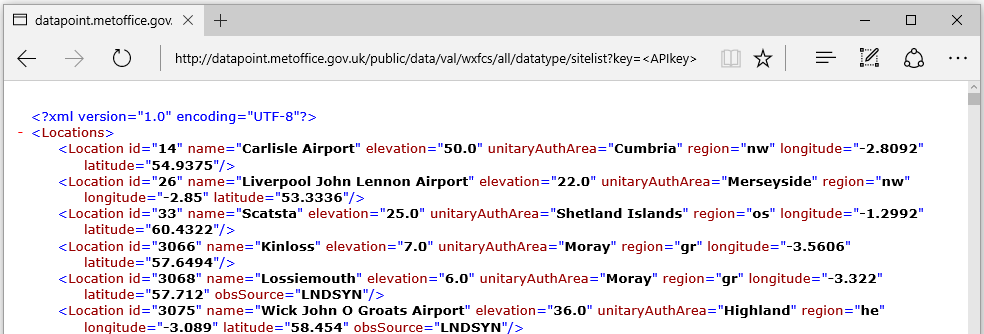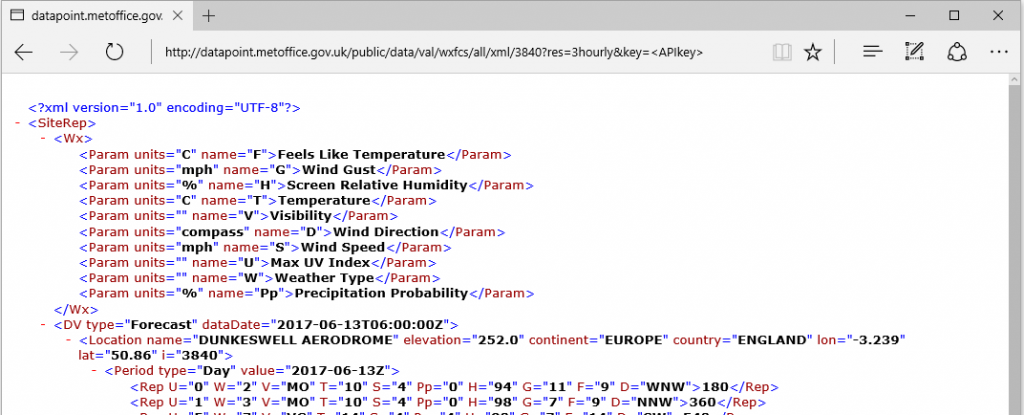You can register for a UK Met Office DataPoint account here.
Once registered you will be allocated an Application Key, which is required for all queries. In addition to your application key, you will need to know the location id for your nearest monitoring site. A list of locations can be obtained by running the following query in a browser:
http://datapoint.metoffice.gov.uk/public/data/val/wxfcs/all/datatype/sitelist?key=<APIkey>
xml response

It is a long list so you may have to search it to find the nearest location, or use your latitude/longitude coordinates. Once you have your location id, you need to populate 2 new hub user settings: DataPointKey and DataPointLocation. You can add these in the Organisation page of the website, or use the following commands updated with your own <values>:
psql -U postgres -d hub -h localhost -c 'INSERT INTO "UserSetting"("Name", "Value") VALUES ('"'"'DataPointKey'"'"', '"'"'<APIkey>'"'"');'
psql -U postgres -d hub -h localhost -c 'INSERT INTO "UserSetting"("Name", "Value") VALUES ('"'"'DataPointLocation'"'"', <LocationID>);'
We are now in a position to get the forecasts for our location. Plug your values into the following query:
http://datapoint.metoffice.gov.uk/public/data/val/wxfcs/all/xml/3840?res=3hourly&key=<APIkey>
xml response

If you inspect this xml response you will see the list of available parameters. What we require is the parameter name e.g. ‘G’ is Wind Gust, ‘Pp’ Precipitation Probability, etc. This is a good time to add any new Measurands to our hub organisation.
We should now have all the information we require to populate the SensorFunction field of a new sensor:
e.g. meteorology.240.S
this translates to a look-ahead timespan of 4 hours and the Wind Speed parameter. The hub code will find the nearest forecast to our requested time, and read the data. The reading will be time-stamped with the future time.
Read on to complete the software installation.
